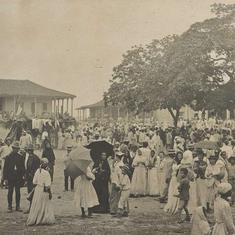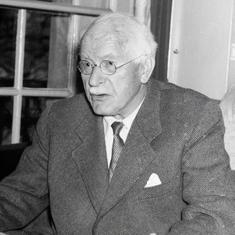On September 24, 1917, when the Allied Powers were gaining the upper hand in what was called the Great War, a letter went out from General Charles Monro, Commander-in-Chief (India), to Lieutenant-Colonel Charles à Court Repington, a famous war correspondent who is credited with coining the term First World War. The letter, written from Shimla, touched a number of subjects, among them India’s contributions towards the Mesopotamia campaign.
“Mesopotamia is, of course, an absorbing subject to India,” Monro wrote. “We have already sent there 272 barges, 63 tugs, 273 craft of different kinds, and their number still increases. Besides, we provide all the material for railways, timber, etc, ad lib, which is demanded. The skilled personnel required for railways, electric lights, ice machines, inland water transport, gardening is a heavy tax on India.”
More than 100,000 labourers went to Mesopotamia (modern-day Iraq) from the time the campaign began in 1914. Among their key tasks was building a railway line from Basra to Baghdad in the face of heavy fighting and debilitating heat.
“As to the provision of rails, we have managed to procure silica bricks for a firm in India, and are consequently turning out rails in increasing proportion,” Monro wrote. “All the rails we make, amounting to about 3000 tons per month, we are sending to Egypt for the present. For Mesopotamia, we pull up existing lines.” This didn’t mean that major railway lines were being dismantled in India to support the war effort. The book Indian Locomotives: Narrow gauge 1863-1940 notes that the rails supplied for Mesopotamia were from temporary lines built in Delhi for the 1911 Delhi Durbar. Generally, it was the rolling stock of wagons and locomotives that were sent from India to Mesopotamia.
Construction of the railway began in the summer of 1916 at a time when the British and British Indian armies were locked in deadly combat with the Ottomans. By the time the hostilities ended between the two sides, the number of casualties had surpassed 250,000.
Expeditionary Force D
Long before this, in 1903, work had begun on a railway from Baghdad to Berlin, with a planned line cutting across modern-day Turkey, Syria and Iraq. Mesopotamia, however, entered the railway age only in 1914, when a 123-kilometre line linked Baghdad and Samarra. A few months later, World War I broke out and the British faced the prospect of the Central Powers, led by Germany, reaching Baghdad and Basra and then controlling the oilfields in Persia.
The British saw a greater threat to their interests in the Western front than in Mesopotamia, but still sent an Indian unit to Basra in 1914. “Indian Expeditionary Force ‘D’, a single division, was despatched to the Persian Gulf in autumn 1914,” British historian Edwin Latter wrote in an article titled The Indian Army in Mesopotamia: 1914-1918 for the Journal of the Society for Army Historical Research. “Its task was to protect the Admiralty’s oil supplies: a minor defensive commitment. Iraq was not to be allowed to draw British resources away from the Western front.”
A relatively easy victory in the Battle of Basra in November 1914 and other successes gave the British commanding officers the notion that they could march comfortably to Baghdad. The 6th (Poona) Division, led by Major-General Charles Townshend, advanced forward, until it was within a day’s march of the city.
“There, at Ctesiphon, on 24 December 1915, it was beaten,” Latter wrote. “Townshend was pursued back down the Tigris to Kut, where he prepared for a siege. India and Britain scraped together a relief force. The so-called ‘Tigris Corps’ was assembled under Lieutenant-General Aylmer. But in a series of bloody battles, it was repulsed. On 29 April 1916, Kut, Townshend and his 10,000 men surrendered.”
It was after this humiliating defeat, which happened just a few months after the Allied Powers’ debacle in Gallipoli, that a greater Indian force was despatched to Mesopotamia. A railway line from the port of Basra was needed to quickly supply British and Indian troops. The idea was to construct the railroad as close to the front as possible.
Basra-Nasiriyah line
To build the railroad, the British needed both labour and skilled engineers to move to Mesopotamia. One of the engineers tasked with the job was Frederick Eustace Cole, who had been working with the North Western Railway Volunteer Rifles. His unit was dispatched to Basra.
“Come the 1990 war, we had all that CNN footage of ‘smart bombs’ taking out bridges along this route,” Cole’s grandson Benedict le Vay told Mid-Day. “I remember an American TV reporter looking at the wreckage puzzled why an Iraqi bridge’s twisted wreckage had ‘Dorman Long, Middlesbrough’ stamped on the side. I wanted to yell at the TV: ‘That’s because my granddad put it there last time this stupid idea was tried!’”
Work progressed quickly on the metre-gauge line. The distance of 225 kilometres, connecting Basra with Ur Junction, was completed by the end of 1916. It was called the Nasiriyah Military Railway as the line extended as far as 14 kilometres away from the city.
“The railway progressed as the Army advanced, but preliminary investigations and a careful survey were impossible,” the Madras Mail wrote in December 1919. “Previous information regarding the country and location of fresh water was scarce and somewhat unreliable and the only necessity was to keep railhead as near the fighting line as possible.” This made the trains and the line a target for the Ottomans.
“Although the trains were armoured, a shot was apparently never fired,” Parker Lamb, Professor Emeritus at the University of Texas, wrote in 2003 in Railroad History magazine. “On one occasion, it was reported, the soldiers nearly fired at some Arabs, but the commander realised just in time that if they shot from the train they’d bring down the telegraph wires running alongside the track.”
The railway played an important role in getting supplies across to the British and Indian armies, which fought with renewed vigour and confidence. By March 1917, they managed to capture Baghdad and contemporary reports indicate they were welcomed by the locals as liberators.
Final stretch
Work on the next line from Ur to Hillah, a distance of 264 kilometres, began in August 1918, but was discontinued within two months. It was only in March 1919, after the war was over, that work started in earnest. Now, there was enough time to do a proper survey and understand the exact challenges ahead. This stretch required the construction of four bridges, the most impressive of which was a pile bridge of 13 spans of 30 feet and a swing span of 40 feet. This bridge was built over the Euphrates.
The final 93-kilometre stretch to Baghdad proved to be less of a challenge as there were already some tracks that extended from the city. These, however, had to be converted to metre gauge. Construction of this line finished by the end of 1919 and it was opened to passengers in 1920, allowing the 582-kilometre trip from near the Iran-Iraq border to Baghdad to be covered in 18 hours.
“Owing to its military origins, most of the railroad ran across the desert, bypassing the major towns and roughly paralleling the Euphrates River,” Lamb, who took the train in December 1944, wrote. “A line of trees in the far distance indicated where civilization was.” The American historian added that the train carried water in tank cars for some of the desert hamlets.
After the war, the erstwhile Ottoman territory of Mesopotamia came under British Mandate. There were suggestions at the time for the area to be annexed to India and given to Punjabis and other so-called martial races who had fought for the British in the war. This was not to be, and Iraq officially obtained independence in 1932.
To get a full understanding of how challenging the circumstances were for workers in those days, one just has to read In Mesopotamia, a book by Scottish neurologist Maurice Nicoll, who wrote under the pen name Martin Swayne. The role of the Indian workers in constructing the railway is fondly remembered to this day in Iraq.
Ajay Kamalakaran is a writer, primarily based in Mumbai. His Twitter handle is @ajaykamalakaran.










